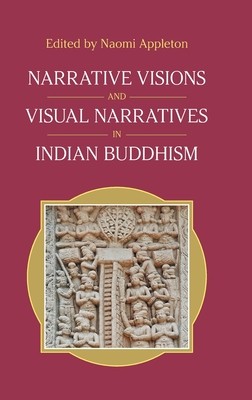
- We will send in 10–14 business days.
- Publisher: Equinox Publishing (UK)
- ISBN-10: 1800501307
- ISBN-13: 9781800501300
- Format: 15.6 x 23.4 x 2.4 cm, kieti viršeliai
- Language: English
- SAVE -10% with code: EXTRA
Narrative Visions and Visual Narratives in Indian Buddhism (e-book) (used book) | bookbook.eu
Reviews
Description
This volume explores the interaction between text and image in Indian Buddhist contexts, including not only the complex relationship between verbal stories and visual representations at Indian sites, but also the ways in which visual imagery is used within textual narratives. The chapters are authored by a mixture of textual scholars and art historians, bringing together different disciplinary perspectives in order to seek a richer understanding of how text and art relate, and of the role of narrative imagery in
different media and contexts.
The book opens with an introduction that explores what narratives and visual narratives are, and why we might want to study narrative images alongside imagery-rich literary narratives. The volume is then divided into three parts. The chapters in "Part I: Visual Narratives" (Zaghet, Reddy, Zin) explore visual depictions of stories in their own right; those in "Part II: Narrative Networks" (Mace, Appleton & Clark, Strong) seek to understand the relationship between specific visual and verbal narratives; and those in "Part III: Narrative Visions" (Gummer, Fiordalis, Walters) primarily investigate how visual imagery and visualisation work in textual narratives.
The volume seeks to bridge the divide that traditionally exists between textual scholars and art historians, and to challenge the contributors to think beyond the usual boundaries of our work.
EXTRA 10 % discount with code: EXTRA
The promotion ends in 21d.04:21:17
The discount code is valid when purchasing from 10 €. Discounts do not stack.
- Publisher: Equinox Publishing (UK)
- ISBN-10: 1800501307
- ISBN-13: 9781800501300
- Format: 15.6 x 23.4 x 2.4 cm, kieti viršeliai
- Language: English English
This volume explores the interaction between text and image in Indian Buddhist contexts, including not only the complex relationship between verbal stories and visual representations at Indian sites, but also the ways in which visual imagery is used within textual narratives. The chapters are authored by a mixture of textual scholars and art historians, bringing together different disciplinary perspectives in order to seek a richer understanding of how text and art relate, and of the role of narrative imagery in
different media and contexts.
The book opens with an introduction that explores what narratives and visual narratives are, and why we might want to study narrative images alongside imagery-rich literary narratives. The volume is then divided into three parts. The chapters in "Part I: Visual Narratives" (Zaghet, Reddy, Zin) explore visual depictions of stories in their own right; those in "Part II: Narrative Networks" (Mace, Appleton & Clark, Strong) seek to understand the relationship between specific visual and verbal narratives; and those in "Part III: Narrative Visions" (Gummer, Fiordalis, Walters) primarily investigate how visual imagery and visualisation work in textual narratives.
The volume seeks to bridge the divide that traditionally exists between textual scholars and art historians, and to challenge the contributors to think beyond the usual boundaries of our work.


Reviews